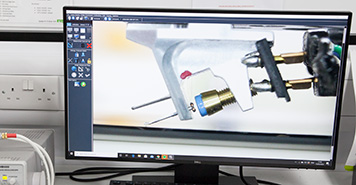It’s been five years since I last visited the Rega factory in Southend and the place has changed markedly in that time. The main difference is the scale of the operation, there are now 140 people working there, so what was a newly built and quarter filled mezzanine floor in 2015 is now full of people making turntables, cartridges and electronics. Loudspeaker production remains on the ground floor alongside assembly for the more affordable turntables, something that the company has learned how to do very efficiently in order to deliver the £250 P1. I was hoping to see the radical new Kyte speaker seen at the Bristol Show last month but that is having teething problems so the only sign of its existence was a stack of crates containing drivers awaiting installation, oh and some prototypes in the R’n’D department.
The new Io budget integrated amp was in pre-production with engineers on the assembly line working out the best process for putting them together, if you want to make almost any audio component in the UK that retails for less than £500 you need to do it quickly and efficiently. No one to my knowledge is as good at this as Rega, it’s why they have managed to build a complete record playing system for less than a thousand pounds when few other UK brands can boast a single component that costs as little.
Just in production is the new Aphelion 2 moving coil cartridge, this are handmade by a small team of people who have both the skill and the patience for this painstaking job, apparently finding the right mix of ability and mindset is very hard. And watching the coils being wound on the tiny iron cross that sits at the top end of the cantilever it’s not hard to see why. The time it takes and the potential for error explains why MCs are so much more expensive than MM cartridges.
I asked to see the Naiad production department and discovered that unlike everything else Rega does where production engineering has been honed to a fine art, Naiad is made in the artisan style by a few people when they can find the time. One of these is company MD Phil Freeman who trained as a horologist and thus no stranger to fine tolerance engineering. He explained that the small scale nature of Naiad production means every part has to be hand fettled to a some degree. The brace on the RB-Titanium arm’s headshell is a case in point, two bars stiffen the arm/headshell joint, these have to be shaped in-situ with a jeweller’s piercing saw and then hand finished right down to the welded joint, which must be a pig of a job. This is why the Naiad is in such limited supply, it was never really intended to be sold but rather created to see how far Roy Gandy’s theories about low mass, high stiffness plinths could be taken and what could be learnt from this. The real fruit of this ‘concept car’ project is the Planar 8 and Planar 10, products that well and truly define the state of the art at and way above their respective price points.
Rega founder Roy Gandy is very much of the opinion that processed food is a bad thing, so when Rega decided to open its own canteen he chose a chef who understood this and gave him guidelines about what to feed the staff. Which must be great for company health and thus morale, that and the fact that they get a free snack and lunch every day.
Rega used to use test discs to measure wow, flutter and speed accuracy but have now developed an optical system based around an encoder disc and computer software that measures multiple parameters and produces a report for every turntable. They mentioned something that’s nearly as accurate and a lot more accessible to the audiophile which is the RPM app. Install this on an iPhone, place it on a cup over the centre spindle and it gives a highly accurate indication of speed as well as a graph indicating wow and flutter. To get a little closer to the standard that Rega expects of its turntables there is a strobe kit available from the company.
Rega is an inspiring company, not only is it pushing the envelope of engineering, design and technology in the field of audio components but it does this so efficiently that many of its products are genuinely affordable, that makes it unique in my experience. The fact that their gear performs so well is the icing on the musical cake.
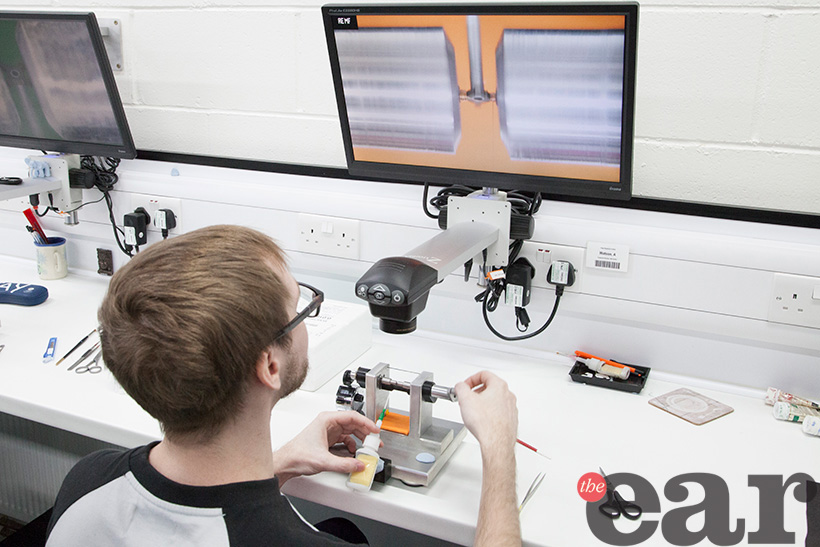
Ashley Watson hand winding nine turns extremely fine wire per side on the iron cross of an Aphelion 2 cantilever to create the coils that produce signal.

Aphelion 2 MCs in yellow and (the last) mk1 Aphelions with clear covers.

Plinths for P8, P10 and RP10 (L to R), note how much bigger the RP10 is than its successor. Platters are from P6 (centre) and P8 (left).
![]()
Apheta 3 MC tracking angle tested visually using a camera and measured with a scope.
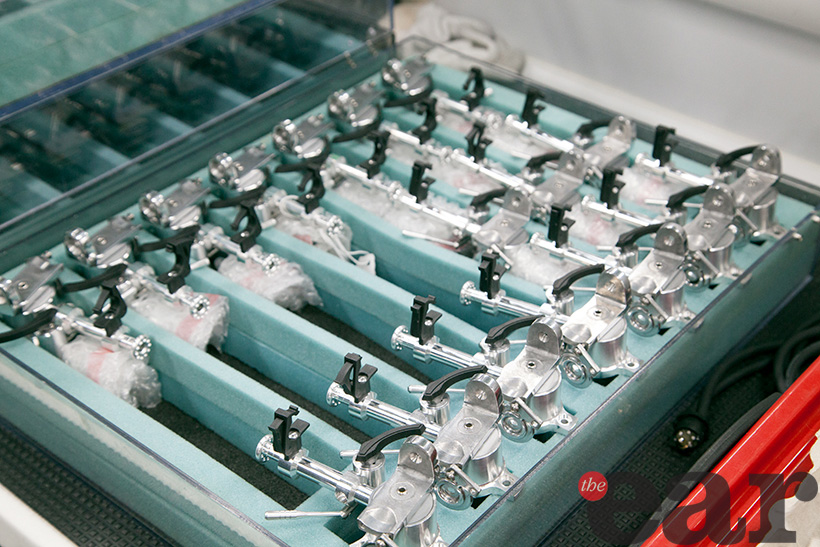
RB3000 arm bases awaiting the next stage of production.

Ashton Wagner (centre) works with the pre-production assembly line for the Io integrated amplifier.
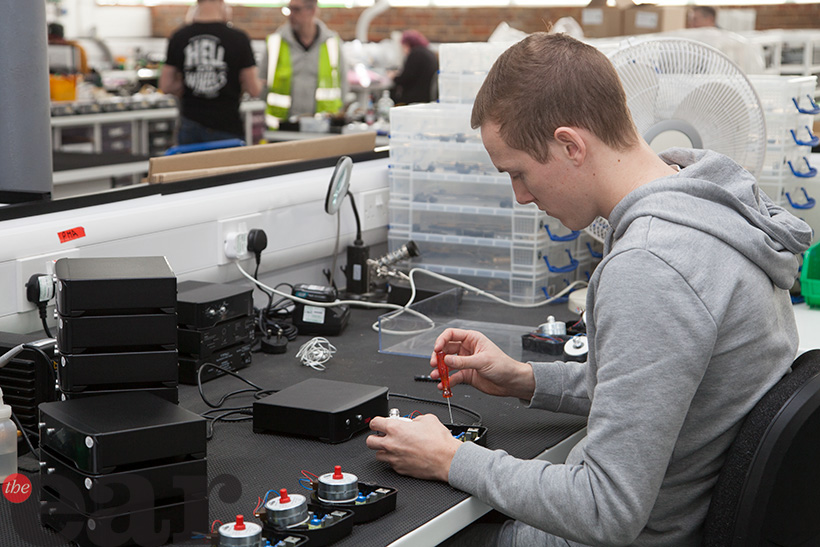
Aaron Clark tuning P8 power supplies to their respective motors for minimum vibration.
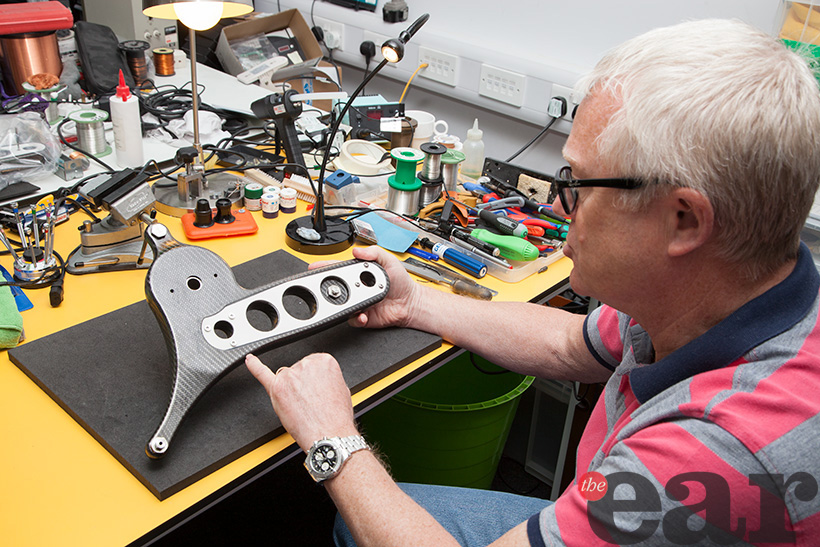
Phil Freeman with the carbon fibre plinth for one of the very few Naiad turntables.
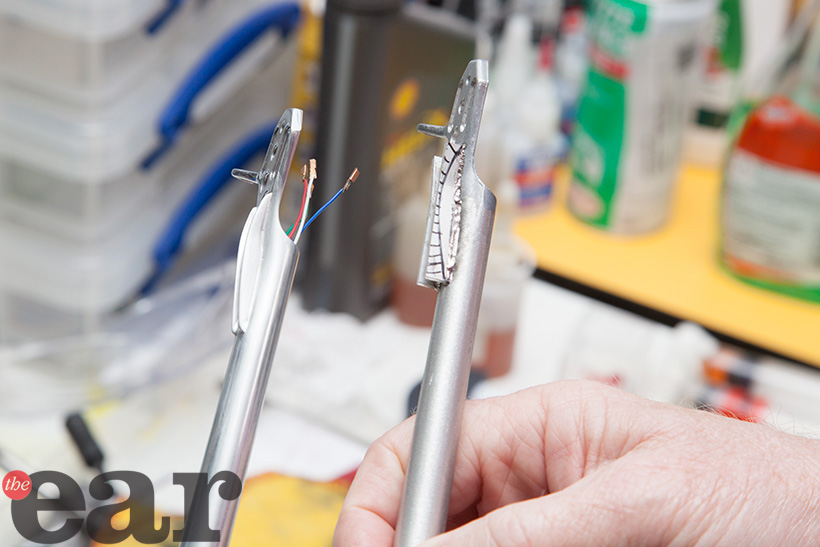
The headshell brace for the Naiad arm before (right) and after (left) one stage of fettling.

Rega’s speed, wow and flutter testing rig uses an optical encoder for maximum precision. All turntables are soak tested prior to test and despatch.

Prototype Kyte speakers reveal the various driver arrangements that were trialled in the R’n’D process.

RP3 and RP6 turntables adorn the walls of the production area.


